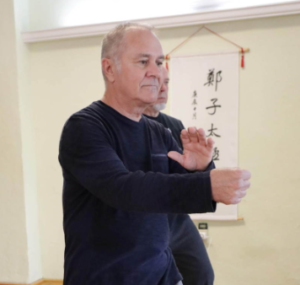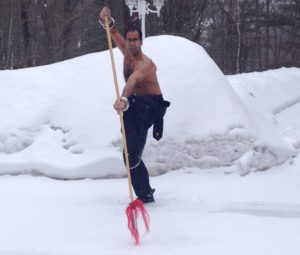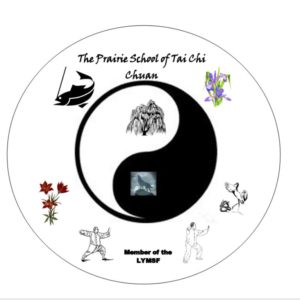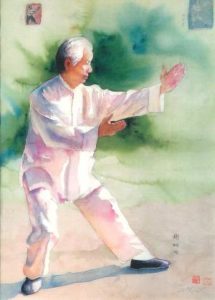Slanted FlyingJournal of Tai Chi Chuan
Training
Training With The Greats: Taiji Seminar With Chen Bing

I haven’t been training in Chen Old Frame for very long, so when I had the opportunity to train with a Chen Master (Chen Bing) I knew that this would be the opportunity of a lifetime. My taiji instructor, the senior students, and I attended a seminar at Master Ling’s Oriental Martial Arts, in Noblesville, Indiana, on June 2-4. Dr. Zhichao Ling was a gracious host with a beautiful school. He helped to teach the lessons that Master Bing was instructing us on.
The first lesson was on a short 13 form Chen form. With each lesson, from form to push hands, to silk reeling exercises, he instructed us with such a calm, demeanor. “Enjoy breathing” he would tell us, reminding us that breathing is one of the first, and most important lessons. I also learned that breathing was an often neglected lesson. As fellow tai chi practitioners, as well as martial artists, I am certain that many of you have had lessons in appropriate breathing technique. Even though the 13 form isn’t very long, it is still a complex form. My tai chi training group is still working on it. The form work was followed by silk reeling, an art form that helps to refine one’s movements. It was during this time where I felt as if I was moving through water. The deceptively simplistic movement of silk reeling exercises grew to be complex the more we trained in it. Working for hours on tai chi form and silk reeling exercises, tired the arms, which made them heavy. Making the arms “heavy” was an excellent tactic for pushing hands (the training that we did on the last day of the seminar).
The latter portion of the seminar dealt with practical applications and pushing hands. Using silk reeling in pushing hands and seeing how the form work, breathing exercises, and silk reeling translated quite seamlessly into the martial application (fending off opponents, upsetting the balance of those with whom we are training with in pushing hands techniques, etc.) was quite an enlightening learning experience. Of course, my taiji group was quite fascinated with the applications portion of the seminar. We were often seen throwing each other to the ground, and getting back up trying the maneuver again.
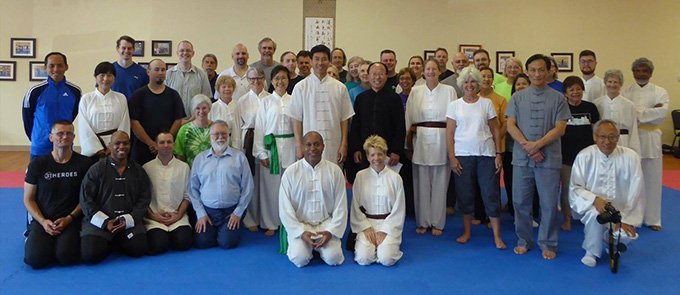
For me, I saw this as a different teaching style. The form work was done standing the entire hour, with lots of repetition. Master Chen Bing spoke with a calm, almost hypnotic, voice. The way he drew out the word “Relax”, almost lulled me into a meditative trance. On many occasions, we heard the loud slap of the collective group dropping our hands to our sides, letting them slap along our thighs. And once our arms got heavy, we would work on the form again. Constantly, he referred to having “heavy hands”. It was quite interesting to see him use those “heavy hands” in application. Sinking the body and applying the “heavy hands” could be used as a strike or a throw. Seeing what we learned on day one (form and silk reeling) being used on day two (martial applications and pushing hands) taught me that even the smallest of movements and seemingly innocuous of hand/arm positions, can be very crucial in self-defense techniques.
Since the seminar, I find myself working a lot with the 13 forms and silk reeling. I also find myself using the “heavy hands” techniques that I learned during this seminar to relax and warm up. One of the most important take-aways from any seminar would be to continue to practice. Otherwise, you risk losing the wealth of knowledge that is gained at events such as this.
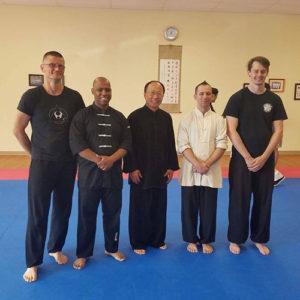 As with any seminar, the training that one receives at an event such as this can only be effective if the lessons are practiced afterwards. My colleagues and I have used many of the lessons that we have learned in our continued training together. I know that I still train in the Chen 13 form on my own. I also have been helping out with a children’s taiji class where we the young students are learning this form. The silk reeling and pushing hands techniques that we have worked with are still a part of my training and the taiji group that I am a part of.
As with any seminar, the training that one receives at an event such as this can only be effective if the lessons are practiced afterwards. My colleagues and I have used many of the lessons that we have learned in our continued training together. I know that I still train in the Chen 13 form on my own. I also have been helping out with a children’s taiji class where we the young students are learning this form. The silk reeling and pushing hands techniques that we have worked with are still a part of my training and the taiji group that I am a part of.
I have learned a lot from Master Chen Bing and Dr. Zhichao Ling. The session has taught me that there are many different components to the internal martial arts (and taiji in particular). Just like any other martial art, it is important to understand how your body works with the art instead of trying to bend to the art (or vice versa). One just needs to be receptive to the teachings and open to the experience of the training and it will enhance you as a martial artist and even as a person.



